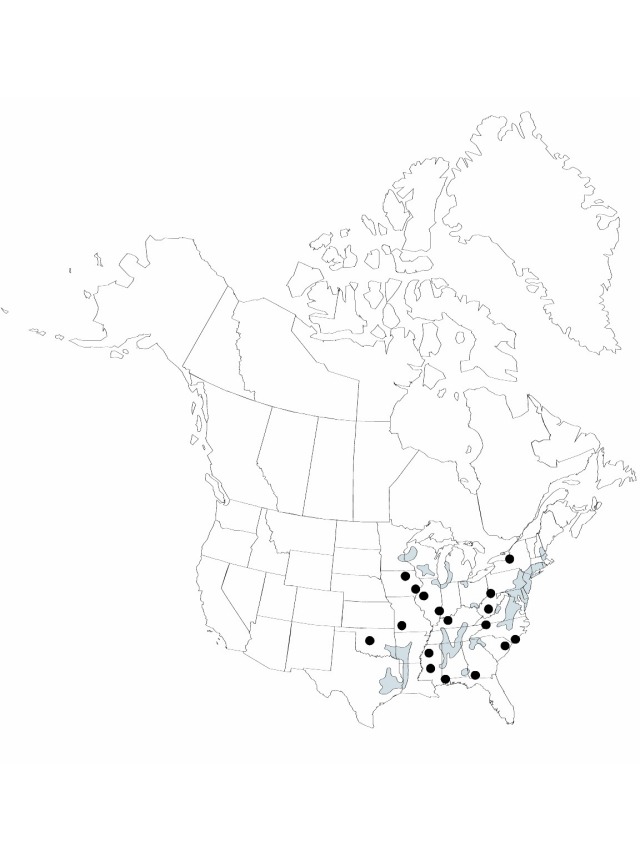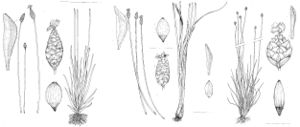Xyris torta
in A. Rees,The Cyclopaedia 39: Xyris no. 11. 1819.
Herbs, perennial, cespitose or solitary, 15–80 (–100) cm, base abruptly bulbous. Stems compact. Leaves ascending to erect, 20–50 cm; sheath base often reddened or pink; blade green, elongate-linear, twisted, 2–5 mm wide, smooth to papillate, with strongly raised veins, margins smooth or papillate. Inflorescences: scape sheaths exceeded by leaves; scapes linear, flexuous, 1–1.5 (–2) mm wide, distally 5–6-ribbed, ribs smooth or papillate; spikes globose to ovoid, ellipsoid, lanceoloid, or cylindric, 8–25 mm, apex acute or blunt; fertile bracts 5–7 mm, margins entire except for red fimbriololation at rounded apex. Flowers: lateral sepals included, strongly curved, 4.5–5.5 mm; keel firm, ciliate except for red-fimbriloolate tip; petals unfolding in morning, blade obovate, 4 mm; staminodes bearded. Seeds translucent, ellipsoid, 0.5 mm, strongly ridged longitudinally with finer cross-lines. 2n = 18.
Phenology: Flowering late spring–fall.
Habitat: Sphagnous bogs, streambanks, pond shores, wet sandy swales, moist disturbed sites, various physiographic provinces
Elevation: 100–1200 m
Distribution

Ala., Ark., Conn., Del., Ga., Ill., Ind., Iowa, Ky., La., Md., Mass., Mich., Minn., Miss., Mo., N.H., N.J., N.Y., N.C., Ohio, Okla., Pa., R.I., S.C., Tenn., Tex., Va., W.Va., Wis.
Discussion
Although I have seen no records from Maine, Xyris torta is to be expected there.
Xyris torta is the widest-ranging of all North American xyrids and the most expressive ecologically; thus it is not surprising that it varies so much morphologically. It is much ofthen confused in older nomenclature literature with X. caroliniana. Xyris torta is the type species for the genus.
Selected References
None.
Lower Taxa
"thin" is not a number.
